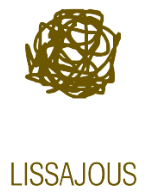Fancy a game of scientific Bingo? An expert speaker will lead this event, and through demonstrations, experiments, videos, and storytelling activities will teach the audience about specific aspects of space science, research or a related topic. The order that which these are presented to the audience is randomised, through the use of a bingo machine, or a similar randomiser.
Using what they have learnt from these activities, students will connect the learning outcomes to their bingo card, specially created where each symbol is connected to an aspect of the activities being shared by the speaker. – If a student completes their bingo card, they win a prize!
Learning Objectives
- Scientific discoveries have an impact on daily life.
- To discover the real people who work in space, that there is a wide range of people who work in the space sector, not just astronauts, and all these people are crucial for successful space missions: from cooks to doctors, from the spacesuit designers to the mathematicians who calculate orbits and trajectories.
- Scientific careers are within everyone’s reach.
Setting Details
This activity can be performed both online and in-person.
Online activity: Students will be able to connect from their home or school. A link to connect to the zoom meeting (or similar) will be given to the students and teachers before the event.
In-person activity: The activity takes place inside a theatre or school hall using a projection screen, audio amplification, a table for the scientific explainer, and seats for students.
Materials needed
- Bingo scoreboard with 40 special symbols: each symbol has a connection with a scientific demonstration, storytelling, or video associated with it. A PowerPoint scoreboard can be used in either the online or the in-person activity. Click on the links below to access the template of a Bingo scoreboard: Bingo Score Card
- Bingo Cards: on each card, there are 6 random symbols. Each student must have a card. Click on the links below to access the template of a Bingo Card: Bingo Playing Cards
- A bag and a set of bingo balls, one for each symbol, or a similar way to randomise this process.
Script/programme of activity
A modified Bingo game in which the 90 classic Bingo numbers have been replaced with 40 special symbols.
Each symbol is associated with either a demonstration or an experiment about space science, a video, or a storytelling activity, related to past and future space missions, the latest scientific discoveries, and the people who made these discoveries possible.
The teacher will hand out the game cards, one for each student who is participating in the activity. These cards will feature 6 of the 40 symbols arranged in a row, instead of the traditional 15 numbers.
A scientific explainer will randomly extract a ball with a symbol, and for each symbol extracted he/she may carry out the associated experiment or activity; the explainer will choose whether or not to do an activity based on its difficulty in relation to the public present and the time available.
Whenever a student sees one of the symbols on their card drawn, he/she will mark it with a cross. A prize will be awarded to the first person who can mark three adjacent symbols on his/her sheet. A second prize will be given to whoever first manages to score all 6 symbols on his/her sheet, getting a Bingo.
The 40 symbols with related experiments and topics covered are described below.
| Symbols | Demonstrantion/ Storytelling / Video | Topics | Topics details | Props | Video | |
| 1 |
Vinegar and bicarbonate
|
Video or Demo | chemical reaction to start rocket | You can focus on the neutralization reaction between vinegar and bicarbonate which produces carbon dioxide. If want, you can carry on the live experiment by making vinegar and bicarboanth react inside a closed container, the production of carbon dioxide increases the pressure inside and the cap jumps up. | Demo: small plastic jar, vinegar, bicarbonate, teaspoon / Video: video of experiment | https://www.youtube.com/watch?v=NvTVN_uCS3M [from 1:13 to 2:20 and then 2:30 minutes] |
| 2 | Water
|
Video | how astronauts manage water in the space station | Water is essential for human life, but let’s see how it behaves in weightlessness on the International Space Station. The rotation of the station makes the astronauts live in weightlessness and allows to show how the water surface tension make the drops remain attached to the skin even during the washings of the astronauts. | Video of Samantha Cristoforetti in the ISS | https://www.youtube.com/watch?v=VnUq5PfnftY |
| 3 | Aerogel
|
video and storytelling | heat shield | One of the most effective thermal insulators in the world, it manages not to be crossed by the heat thanks to its microstructure create by micro air chambers that hinder the conduction of heat. The infrared camera shows this thermal difference between one side and the other even if we let’s fire the surface. | Video of Aereogel experiment | https://www.youtube.com/watch?v=qnOoDE9rj6w |
| 4 | Action and reaction
|
Storytelling | third law of thermodynamics | The third law of dynamics tells us that if a body A acts with a force on a body B, the body B reacts on the body A with a force with the same intensity but the opposite direction. A typical example is the tug-of-war game, when the two teams are tied and neither team gets the better of the other. | Picture | |
| 5 | Boiling Water
|
Video | void in space | We all know that water boils at a temperature of 100 ° centigrade, but this is true only if we are at ambient pressure above sea level. Otherwise, the temperature at which the water boils varies according to the pressure: if the pressure goes down, the embolisation temperature goes down too and vice versa. | Video of bell jar experiment | https://www.youtube.com/watch?v=b2hxdNNEFm4 [from 1:15] |
| 6 | Falling
|
Video | Galileo’s experiment and the law of falling bodies | Galileo had predicted that in the absence of air objects with different weights and shapes would have fallen in the same way, reaching the ground simultaneously. This was done only many years after his death and the astronauts repeated this experiment in this honour also on the Moon. | Video of Galileo’s experiment in a Drop Tower | https://www.youtube.com/watch?v=E43-CfukEgs&ab_channel=BBC |
| 7 | Capillarity
|
Video and storytelling | capillarity | Capillarity is the principle thanks to which the water rises in a very small duct. It is the principle thanks to which the nourishment rises on the trunks of the plants up to reach very high heights. | Video of experiment | https://www.youtube.com/watch?v=JXLwxP9ri2Y |
| 8 | Starry sky
|
Storytelling | the two celestial maps to explain that they are different | The map of celestial objects in the sky observable from the northern hemisphere of the earth is completely different from the one observable from the southern hemisphere. This is due to the fact that two completely different portions of the Universe are observed. | Picture | |
| 9 | Constellations
|
Storytelling | Story of constellations | In ancient times celestial objects were linked to remembering some forms that are still recognized today as Constellations. Less known is the fact that astronomically the Constellations are 13 (and not 12), with the addition of Ophiuchus. Another fact to underline is that the current Constellation is where the Sun is passing and therefore it is not visible during the night but would be visible during the day (if Sun did not illuminate the Earth). | Picture | |
| 10 | Sunscreen
|
Video and storytelling | UV radiation and skin effect | Ultraviolet is electromagnetic radiation that our visual system does not perceive, but some special cameras do. We see through these cameras how some materials behave, like safety glasses or some face make-up. We also see the great efficacy of sunscreens to keep safety our skin from UV: in fact, the anti-UV cream is seen as completely black. | Video of skin with sunscreen in UV light | https://www.youtube.com/watch?v=FyH-b_LDlSY |
| 11 | Photovoltaic
|
Storytelling | How photovoltaic panel works | Photovoltaic panels convert light energy into electrical energy. They need to be illuminated to function, but they are an excellent source of renewable energy. Many tools used outside the Earth recover energy thanks to photovoltaic panels. | ||
| 12 | Whip
|
Video and storytelling | sound barrier | Whip emits its characteristic snap just because it breaks the sound barrier. If an object or a part of it manages to exceed the speed of sound even for a very short time, we get what is the Sonic Boom, a very intense wave of sound caused precisely by the excess of this speed (in the air of about 340 m/s) | Video of how whip sounds | https://www.youtube.com/watch?v=Ph4CSteEY0Y |
| 13 | GPS
|
Storytelling | How GPS works | Only thanks to a large network of orbiting satellites we can know precisely where we are on the Globe. To do this, the GPS receivers detect the exact time sent by at least three satellites and compare it with the exact time of the point where we are. They can know the exact distance of the satellites so we can understand where it is on the Globe. This is possible also thanks to the relativistic corrections that Albert Einstein gave to the speed of light. | Picture | |
| 14 | Fire
|
Video | foam that catches fire | We can fill soap bubbles with flammable gas, this will allow us to ignite them. If our hand is protected by a film of water, we can also take these bubbles in hand and set them on fire, our hand will be safe from burns thanks to the evaporation of the water which removes heat from the hand, preventing the temperature from rising too much. | Video of experiment | https://www.youtube.com/watch?v=SWGyzzgmG1A [till 1:20] |
| 15 | Glove
|
Demonstration | effect of atmospheric pressure | We fill a glove with polenta flour and put it inside a tube with a filter on the bottom and close everything hermetically. Extracting the air from inside the glove lowers its internal pressure and the external pressure compresses the glove and the polenta inside making it very compact. If we try to deform a finger of the glove we see that it is unable to return to its original position. If we let the air in again, the effect disappears | glove, tube, filter, polenta or flour | |
| 16 | Hubble
|
Storytelling | What’s Hubble | The most important space telescope is able to capture large images of the deep Universe because it is outside the atmosphere and therefore has no light pollution. | Picture | |
| 17 | Infrared
|
Video and storytelling | observe the cosmos with other eyes | Infrared is electromagnetic radiation that the human eye cannot perceive but which detects the thermal difference of objects very easily. it is used to “see” the temperature of objects through special cameras. Also highly used for night vision coupled with infrared illuminators that emit light that is not visible to the human eye. | Video of a thermal imaging camera | https://www.youtube.com/watch?v=48bwQVa0AQc |
| 18 | Freeze-dry
|
Demo | astronauts meal | The food that feeds the astronauts on the orbiting station has been previously lyophilized so that it can be very light and easy to send to the sky but retains many of its nutritional characteristics. an excellent compromise between portability, shelf life and remaining nutritious. | astronauts food | |
| 19 | Lissajous
|
Video and storytelling | vibration of objects | To view the waves that propagate on a flat surface, just attach a mirror to the elastic surface stressed by a speaker and then point a laser at it that will end up on a screen. By vibrating the membrane, the laser beam will move on the schematic drawing of the shapes. The more regular the stress, the more circular the design will be or in any case regular, in the case of stress with different frequencies at the same time you will have a very intertwined design. | Video of demo | https://www.youtube.com/watch?v=C-V1uXeyGmg |
| 20 | Hammer and feather
|
Video | Galileo’s experiment and the law of falling bodies | The great Galileo had predicted that in the absence of air objects with different weights and shapes would have fallen in the same way, reaching the ground simultaneously, this was done only many years after his death and the scientists in his tribute repeated this experiment also on the moon. | Video of hammer and feather experiment done on the moon | https://www.youtube.com/watch?v=KIHsl5muVYM |
| 21 | Measure
|
Demo | Charge-Coupled Device and Complementary Metal Oxide Semiconductor | To measure instead of the traditional meter we can also use laser light. Calculating the time that the light beam takes to arrive at the objective and come back knowing its speed in the air (2,9999 10 ^ 8 m / s just less than its speed in the void given by a refractive index of ‘air of 1,00029). | Picture and laser meter | |
| 22 | Oxygen
|
Storytelling | oxygen recirculation system in ISS | In nature, the oxygen we breathe derives from chlorophyll photosynthesis which allows plants to live and synthesize the necessary sugars, while in the orbiting station it is recovered through the splitting of water into oxygen and hydrogen with the electrolysis process. | Picture | |
| 23 | Balloon
|
Video and storytelling | heat absorption | Water has an excellent heat capacity and therefore is able to absorb a lot of heat before heating up, which is why it is often used in cooling systems. For example, we can preserve a simple balloon from expanding for several minutes if placed on a flame with water inside that acts as a cooling liquid. | Video with experiment | https://www.youtube.com/watch?v=sSu76sEgjlI |
| 24 | Parachute
|
Video | landing astronauts | The parachute has its effect only in the presence of an atmosphere, obviously, it then depends on the density of the atmosphere to make its effect more or less great. The aim is to make the fallen body reach the limit speed of the fall and to ensure that this is low enough not to break the object on impact with the ground. The limiting speed of fall is obtained when the weight force which attracts downwards is perfectly balanced by the aerodynamic resistance which is directed upwards. | Video | https://www.youtube.com/watch?v=WV46urZYfTY |
| 25 | Hairdryer
|
Demo | aerodynamics | With an easy experiment that involves directing the flow of air from a hairdryer upwards and placing a ping pong ball inside the flow. This is trapped inside the flow and even if we move the hairdryer the ball will remain inside the airflow without falling. | Hairdryer, ball | |
| 26 | Cooling down
|
Video and storytlling | insulating materials | A thermally insulating material is slowly let through by the heat, this characteristic means that an ice cube placed on top of an insulating material takes a long time to melt while placed on top of a conductive material melts very quickly. | Video with experiment | https://www.youtube.com/watch?v=vFZZwICqly8&t=7s&ab_channel=PhysicsDemos |
| 27 | Nuclear reaction
|
Storytelling | sources of energy | There are mainly two types of nuclear reactions: fission and fusion. Fusion occurs inside stars and uses light atoms such as hydrogen for heavier atoms and energy, while fission breaks down heavy atoms to form lighter ones and energy. this second process, however, makes the waste materials radioactive and therefore extremely dangerous for humans | Picture | |
| 28 | Satellites
|
Storytelling | satellites around the Earth | To communicate around the Earth there are now many artificial satellites, some in operation, others disused or broken. These satellites together with the many rocket debris and other materials mean that the garbage dangerous for involuntary collisions is more and more and now there is the risk of breaking into future objects that we will send into orbit. | Picture | |
| 29 | Shaving foam
|
Video and storytlling | Importance of spacesuits | Shaving foam is made up of a myriad of tiny bubbles of air that all together form the foam. If we subject the foam to a very low-pressure environment, each of these tiny bubbles increases its volume to equalize the internal pressure with the external one. if we then suddenly make the pressure return to atmospheric pressure many of these bubbles explode because they are unable to adapt to the rapid increase in pressure that would make them return to the initial volume. Spacesuits are those that keep astronauts from exploding due to the very low pressure present in space. | Video of experiment | https://www.youtube.com/watch?v=TVcXzUxlbVs [from 4:08] |
| 30 | Sensor
|
Storytelling | technique for measuring distances SENSORI MACCHINE FOTOGRAFICHE | Digital sensors have made huge steps forward, managing to miniaturize more and more and respond better and better even to very little light, this is making it easier to photograph deep space, managing to better distinguish galaxies and celestial objects extremely far from us. | Picture and laser meter | |
| 31 | Spacetime
|
Video and storytlling | spacetime and gravitational wave | The revolution of thought made by Albert Einstein shows us how the attraction between two masses is due to nothing other than the deformation of the space-time fabric. Objects move on space-time deformed by energy and mass. | Video with demonstration | https://www.youtube.com/watch?v=MTY1Kje0yLg [from 7:50] |
| 32 | Planets
|
Storytelling | distance between planets in the solar system | The solar system consists of 8 Planets but fundamentally it is completely empty. If we report the dimensions of the Planets to scale with respect to terrestrial objects we will see that by placing the Sun inside the Colosseum of Rome we will gradually find all the other Planets scattered throughout Italy that would be extremely distant and small. | Picture | |
| 33 | Spin |
Video and storytlling | on the station, there is no gravity because it rotates | Video with demonstration | https://www.youtube.com/watch?v=iyq9y77pq8I | |
| 34 | Spin-Off
|
Storytelling | the fallout of space research in everyday life | Picture and newspaper | https://spinoff.nasa.gov/spinoff/archives | |
| 35 | Sound in space
|
Storytelling | multi-message astromony | Picture | ||
| 36 | Remote controller
|
Storytelling | rovers are controlled with a delay given by the distance | Picture | ||
| 37 | Terminator
|
Storytelling | what’s moon terminator | Picture | ||
| 38 | Sandwich
|
Storytelling | distance from the earth to the moon | Picture | ||
| 39 | Suction cup
|
Video and storytelling | suction cup effect | Video of Magdeburg hemispheres | https://www.youtube.com/watch?v=gb4eUu_ELSs | |
| 40 | Wheel
|
Video and storytelling | centrifugal force | The gyroscopic effect tends to keep the axis orientation of a rotating object stable: the faster is the rotates, the greater the effect. This phenomenon is often used inside sensors to define the direction and orientation of objects. In everyday life, we take advantage of this phenomenon to be able to ride a bicycle and moped. | Video with demonstration | https://www.youtube.com/watch?v=XPUuF_dECVI [from 35 to 37 minutes] |
Teacher/educator
Bingo cards will sent to the teacher. Teacher will have to give one card to each student. Each student must have a different card.
If the activity will be online, the zoom link to connect will be sent to the teacher.
Researcher/invited expert
You may want to invite an expert from the space sector to take part in your space bingo event, a person who has a good knowledge of the space-related content that is being shared with the students. Otherwise, the person moderating the game will need to learn the associated script and facts well.
Key elements for inclusivenes
Perhaps include researchers and experts from under-represented groups, or who come from non-traditional science backgrounds.
Include in the activities some information about the contributions of under-represented groups within the space sectors.
Websites
Videos
DO NOT mix VINEGAR and BICARBONATE to clean the house and unclog the sink
NON mischiare ACETO e BICARBONATO per Pulire Casa e Sturare il Lavandino-
[from 1:13 to 2:20 and then 2:30 minutes]
A full list of resources used by Psiquadro for there Space Bingo event can be found here:
Extra information
Click here to download the bingo cards
For more information contact alfonsi@psiquadro.it






































